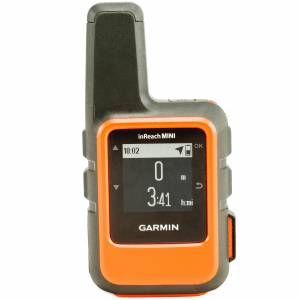Chasing wild animals can take you on harsh trails. Include these overland essentials on your rig packing list to be prepared.
Forest service roads and forgotten two tracks lure in adventurous hunters looking to escape the crowds. These paths often offer challenges for the backcountry sports-lovers scouting hunting areas.
This basic overland gear will give you a better chance of getting in and out of these desolate regions. Be sure to know the limitations of both your driving abilities and the vehicle you’re piloting.
Common Sense
The most valuable thing you can bring on the back trails is common sense. The stakes are much higher when there are no bars on your cell phone and there isn’t another human within a 50-mile radius that you know of. Be safe, take your time, and enjoy the trail to your glassing point.
Tow Rope
The tow rope is essential for getting out of sticky situations: mud holes, deep ruts, creek crossings gone bad. A friend or stranger with a capable rig can help you out if you utilize radios to send out grid coordinates and an SOS — or if you’re lucky enough to have cell service.
Tow ropes without metal hooks are best. A failure in the system can send metal flying, causing fatal injury.
For this system, you’ll also need two shackles to attach the vehicles together. Soft shackles, for the same reason, are the safest.
USWAY Gear 3″ x 30′ Tow Strap: $35Shovel
The shovel is a must for the back roads. Whether digging a latrine, rescuing yourself from mud, or clearing debris to make room for traction boards, the shovel is the most useful piece of equipment for the trail.
You can also find a full-length shovel at your local hardware store for $20-80.
Gerber E-Tool: $44Traction Boards
Traction boards are a DIY solution when the sand or mud sinks a tire. Clear debris with your shovel to allow for placement of these boards under tires, and be sure to utilize the appropriate tire speed. It’s often best to have the tires deflated to a lower psi to improve tread traction.
A kit includes two traction boards with visibility leashes.
Maxtrax MKII: $300Medical Kits
A basic first-aid kit should include essentials for cuts, burns, and other minor injuries. This should be in every outdoor enthusiast’s vehicle.
A trauma kit is ideal for more adventurous backcountry and off-road pursuits. Play by the rule that Murphy’s Law is always looking for an invite to the party. These kits should include splints, tourniquets, and major bandaging.
Fire Extinguisher
If one thing goes wrong, surely another is bound to happen. Be prepared for any unexpected ignitions, such as vehicle exhaust catching dried grass or your fire sending embers where they aren’t supposed to go.
The Element E50 fire extinguisher is a new spin on an old product: smaller design, greater output. The E50 model is almost a 12 inches long, a little over 1 inch in diameter, and weighs just over 0.5 pounds. This compact extinguisher gives four times the firefighting output of a 5-pound extinguisher.
Element E50 Fire Extinguisher: $80Radio Communication
The deeper you get into the backwoods, the less cell coverage is often available. This is where radios shine. Communicate with the friend trailing behind you or reach out for SOS situations.
The Midland MTX 275 also has the functionality of reaching NOAA weather for alerts. This is handy when storms pop up out of nowhere and you need to get out. The vehicle-mounted MTX 275 can communicate directly with two-way radios as well.
Sattelite Communication
For the direst situations, your lifeline to the outside world is through the skies. Satelite communicators like the SPOT X or Garmin InReach Mini allow users to communicate where cell phones don’t work.
And when things go really wrong, they function as SOS beacons, directing emergency personnel to you by GPS. While this function is only to be used as a last resort to self-rescue, when life and limb are on the line, there’s no substitute for an emergency beacon.













